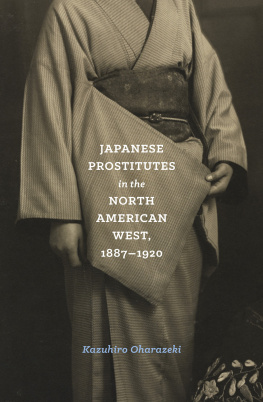Foreword
Many British Columbians remember the day the war came to our coast. It was June 20, 1942, and the Japanese submarine I-26 was on patrol off the west coast of Vancouver Island, intent on doing harm. Surfacing and laying down a smokescreen to mask their position, the crew of I-26 readied their 5.5-inch (140-millimetre) deck gun for action. Two miles distant, on the shore, was the Estevan Point light. The lighthouse, established in 1907, had a wireless station. The Japanese commander of the submarine, Minoru Yakota, intended to knock that wireless station out, believing it was part of a radio-direction network working to pinpoint his location.
Chief Gunner Saburo Hayashi fired the first of 21 shots at 10:15 p.m. Half an hour later it was over. The isolated coastal lighthouse and its inhabitants, as well as residents of the nearby First Nations village, had come through the attack unscathed, but shaken. The first enemy shells to hit Canadas shores since the War of 1812 had made an impact, of sorts, on the sand and a more indelible impact on the national psyche. Conscription, hotly debated in Parliament, was nudged into acceptance by the attack. And to this day, people still remember the day the war came here.
Some sceptics, looking at the conscription debate, suggest a conspiracy by Ottawa and the United States government or just Washington, D.C., alone to send in a U.S. Navy warship to harmlessly shell an ally to boost support for conscription. They are wrong, as the Japanese, including the crew and captain of I-26 who survived the war, readily admit to the shelling. And there is proof for those who do not believe them: at least one shell did not explode. Discovered on the beach at Estevan on June 8, 1973, the shell was carefully examined and then destroyed by the Explosives Ordinance Division crew at CFB Comox less than a month later on July 3. People may lie, but as anyone who watches a good detective show knows, forensics dont. The shell was a 5.5-inch (140-millimetre) shell a perfect fit for the deck gun of I-26 . Even so, there is and ever shall be a determined group of true believers who will adamantly insist the Americans did it.
Thats why we need to constantly examine our history, even that of more recent events. In terms of the war out here, a seemingly isolated and perhaps unimportant theatre in the global conflict of 19391945, Brendan Coyle has done a magnificent job in this comprehensive review of the war on the West Coast. No other single volume has so neatly tied together all the stories from the submarine attacks and balloon bombings to the Japanese invasion of the Aleutians, from the joint U.S.Canadian effort to drive out the Japanese, CANOL, and the naval battle of the Komandorskis to the myriad stories of how the war affected people in British Columbia, California, Oregon, Washington, and Alaska. Among the people affected, unfairly so, were loyal Japanese Canadians and Japanese Americans, stripped of their homes and property, and sent into exile by their governments in a racially charged atmosphere exacerbated by Japans successful forays off our shores. That story alone is worthy of much reflection and emphasizes the need to remember the past so as to not repeat it, a lesson relevant in our own time as we grapple with the war on terrorism and the need in this conflict to protect the rights of our citizens and residents who happen to be either adherents of Islam or of Arabic origin or descent.
History is alive, history is relevant, and history is about us, the people. In the pages that follow, a number of connections to the present and lessons learned and not learned will spring to mind.
James P. Delgado
Director of Maritime Heritage,
Office of National Marine Sanctuaries
National Oceanic & Atmospheric Administration
Preface
While growing up on Canadas British Columbia coast, Id heard stories about the Second World War that seemed to be based more on imagination than fact: rumours that a Japanese submarine had been sunk off Victoria after firing on the city; that a Zero had flown over downtown Portland, Oregon; and that the Japanese had actually bombed Anchorage in Alaska. I shrugged off these stories as so much fiction, and I forgot about them for the next twenty or so years.
In that time I picked up scraps of stories of veterans who had served in something called the Aleutian Campaign. I drew the mistaken conclusion that these soldiers had pulled an easy number, being posted to Alaska for a good part of the war. Alaska was, after all, right next door to British Columbia, and we were as far from the action as one could be, or so most everyone, including me, believed.
It was after reading Brian Garfields excellent book The Thousand Mile War that I began to research further and seek out the veterans who had served in this unknown war. And far from being an easy number, it turned out that many of the soldiers, sailors, and airmen who went on to fight in Europe and the Pacific recall the extreme deprivation of fighting a war in the relentless weather of Alaska and the Aleutians. Here the North Pacific played no favourites, meting out equally harsh punishment to ally and enemy alike, claiming more casualties to weather than any other theatre of operations.
There was even some truth to the childhood rumours. While Japanese subs didnt shell Victoria, they did bombard the West Coast, not just once but on three occasions. An enemy aircraft did fly over Oregon and even bombed it in an almost totally unnoticed attack. And while Japanese Zeros didnt make it as far as Anchorage, they did bomb Dutch Harbor an Alaskan fishing village 1,300 kilometres west and occupied a tiny fraction of North American territory. All of these incidents were tied to this forgotten war in Alaska.
I have concentrated on Canadas involvement in the war in Alaska for the simple reason that this country was never given its due for its contribution. By no means do I seek to diminish the accomplishments of the United States in the Aleutians war. That nation was by far the major force in this theatre, as in many others, and there are several
fine accounts of the monumental task it achieved in driving the enemy out of Alaska. Nor have I mentioned all units that were on duty in British Columbia, Washington, and Alaska during the war, but only those relevant to this story. Again, this omission is by no means meant to downplay their role in the defence of the West Coast.
It was difficult to piece together the actions of this obscure war. Some records give differing accounts of the same incident, while veterans struggle to recall events of 60 years ago. There is also some conjecture
on my part when relating events, although what is described would have been a standard procedure. For instance, when submarine RO-61 is pinned down to the sea bottom, there is a fairly rigid course of action any submarine crew would have followed, and that is how it is described.
That there ever was a war in the north was quickly forgotten because the campaign concluded as the bigger wars overseas carried on. What
is left are the dog-eared squadron journals, the mud-brown photos of soldiers hunkered into the muskeg of treeless, subarctic islands, and
the ineffaceable recollections of the few surviving grey-haired soldiers.
~
This book really is the effort of a lot of people, for without their help I would never have completed it. My brother, Fergus Coyle, took a manuscript I had all but given up on in exasperation. For taking time away from his wife, Cassie, and his two daughters to spend the better part of a year painstakingly editing this manuscript into a readable form, I wholeheartedly thank him. My wife, Melanie Arnis, and daughters Meghan and Rhianna put up with my endless hours working on this project while I was allowed to neglect the routine of family. I also want to thank those veterans of that unknown war who gave me their time, photographs, and memories, and the people at the National Archives and CSIS in Ottawa, Comox Air Force Museum and Major W.A. March of Air Command Headquarters, Department of National Defence, who searched through records on my behalf. Also, thank you to Harry Martin at Vimy House, Canadian War Museum; the 17th Division Association; Attu Veterans Association; Peter Vassilopoulos; and Len McCann and James Delgado of the Vancouver Maritime Museum, for their valuable time and assistance.







